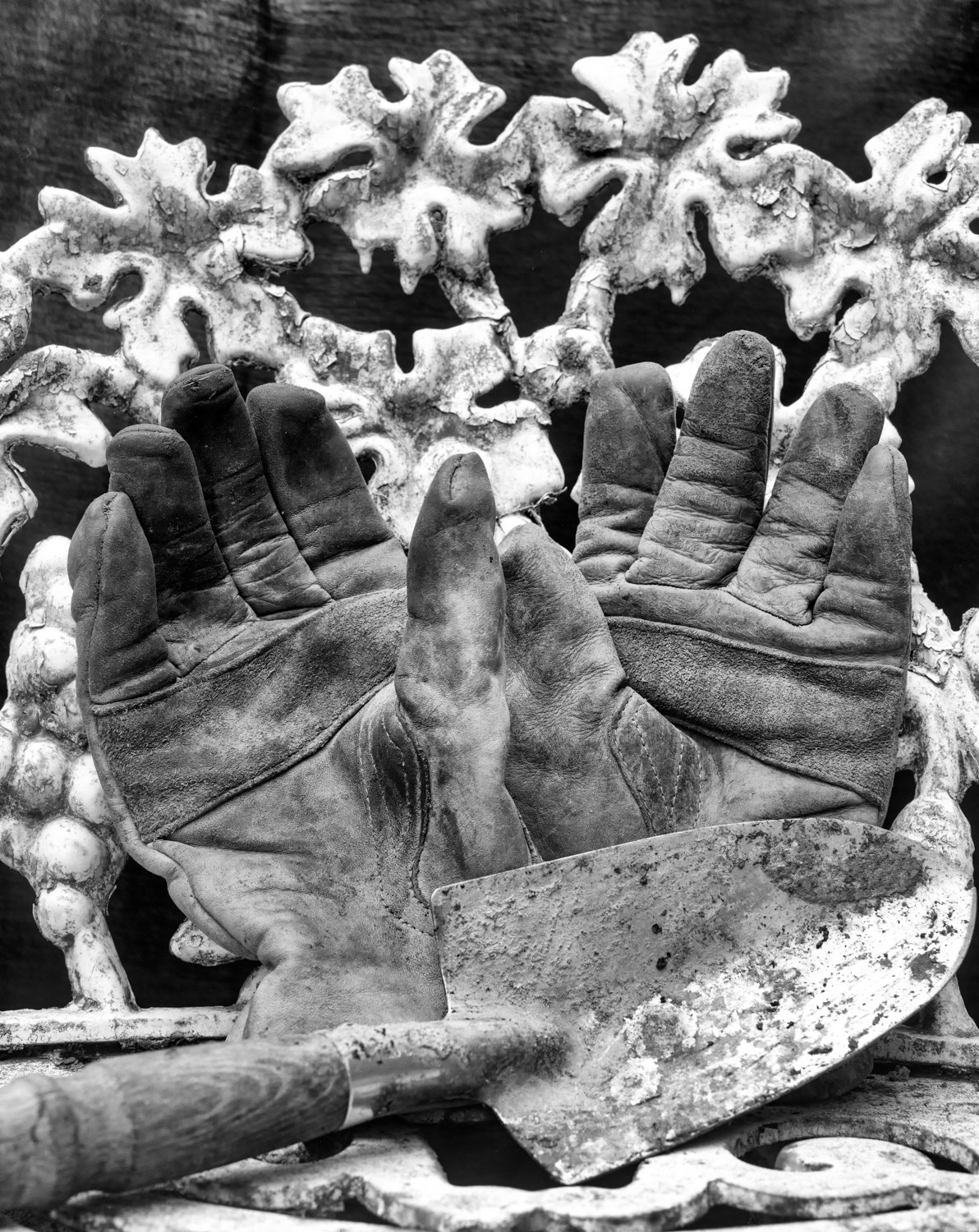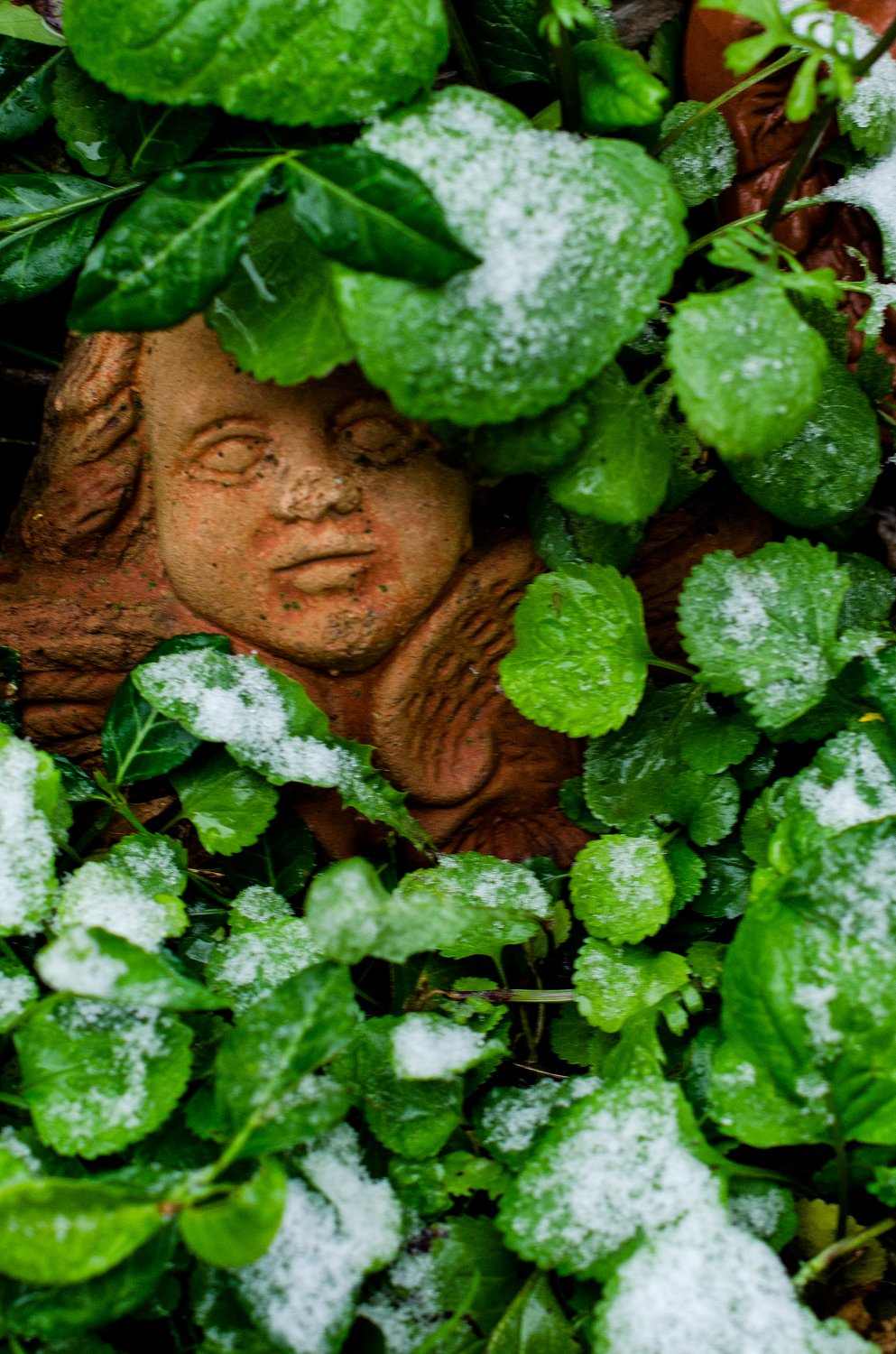Life On Snob Hill: It being Spring here – as everywhere else in the northern hemisphere – our hands and hearts have turned to the soil. Spring is Dirt Time in a way not shared by the other seasons. After the hard-packed, frozen winter, it seems right to exchange mittens for our leather gardening gloves, to plunge our hands and trowels into the earth, and to embrace the faith that good things will emerge and thrive.
“Wrought - Spring” from the CB Adams film photography project titled Wrought.
Yesterday, we were assessing the open soil left when we removed a row of red twig dogwood bushes along the metal fence as the front of the Snob Hill property. We acquired the dogwoods cheaply at a school fundraiser more than 10 years ago. The bushes grew well enough, but the promised winter red twigs never really “redded up” and during the growing season they were just a bland green screen. So, we made what felt like the heartless, ruthless decision to pull them up.
Aristotle coined the phrase “nature abhors a vacuum.” To that we would add, “and so do gardeners.” The now-bare bush row practically begged to be replanted. After the substantial amount of hard landscaping we added this year, the budget for plant material (what a heartless phrase, that) is not as generous as we would like. So, we repurposed the decorative side panels from a black metal arbor by attaching them to the fence. We then planted a “mailbox blend” of Morning Glories, blue and white. Inexpensive, traditional and almost guaranteed to grow and thrive. As we dug the holes for the hard, black, pre-glory seeds, we thought of how we must look to passersby: prostrate, eyes downward, hands and arms gesturing rosary-like. We have acquaintances who say they begin and end each day, “on my knees.” We are reminded of our own Christian upbringing and our parents’ gentle admonishment at bedtime to “say your prayers” with hands clasped and pressed firmly against our impressionable faces.
We are reminded, too, of a plaque that graced the gardens of both of our mothers. If you search the interwebs, it is the first thing we see. We have seen various forms of this plaque in many gardens. We know you know it, too. It is from a poem called “God’s Garden” by Dorothy Frances Gurney (1913):
…The kiss of the sun for pardon,
the song of the birds for mirth,
one is nearer God's heart in a garden
than anywhere else on earth…
We have distanced ourselves from the gardening and godliness connection, but we still feel something reverential about the act of gardening. On our knees, almost in supplication, we may not be praying per se. We are, instead, in a state of uncertain hopefulness. In addition to the Morning Glories (what a hymn-like name!), we dug in a bag of 30 small Peacock Orchids (Acidanthera) and five “Anastasia” Amarines, as well as emptied a packet of heirloom Nicotiana, or Scented Jasmine Alata. These are all new to us – hence the uncertain hopefulness.
Will these plants “like it” here on Snob Hill? We can’t really know right now. Only time will tell, as it always does. In the meantime, we hope. On our knees, opening the earth and filling those small fissures with hope in the form of seeds and roots and corms and tubers. Hope for our dear Emily Dickinson may be a thing with feathers, but to us, hope is the thing with leaves and stems and stalks and flowers and nectar.
As the imagined passersby observe us in our reverential, soil-bound gaze and reverie, they cannot know that for reasons not entirely clear, as we caress the earth, we are also reminded of Jimi Hendrix and that line from Purple Haze:
“ ‘Scuse me while I kiss the sky.”





